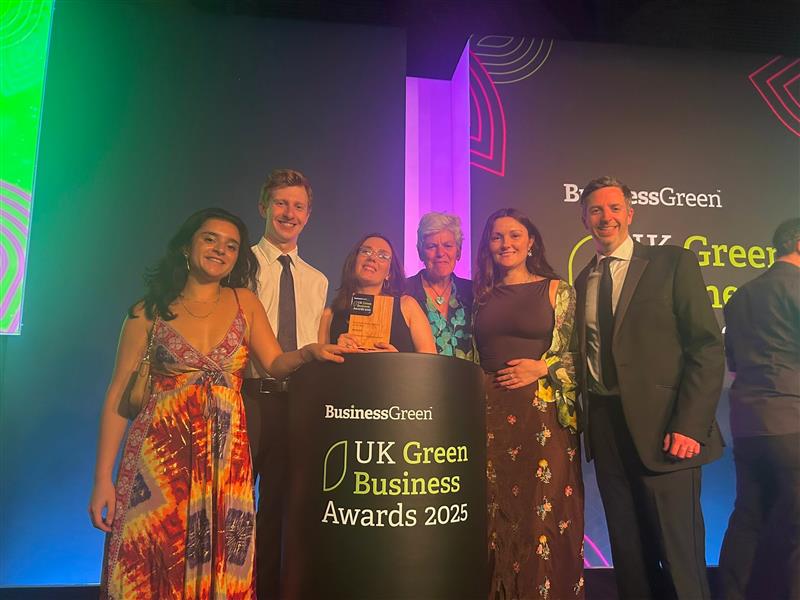The RACE Report: Why the environmental sector must take meaningful action on racial diversity

This week, The RACE Report, which aims to address race diversity and inclusivity within the environmental, climate and sustainability charitable sector, has released its latest alarming data: only 7% of professionals working in the UK environmental sector identify as Black, Asian or Minority Ethnic, compared with a 14% national average across all professions.
That’s a huge problem, on many levels. For starters, we cannot expect to deliver climate justice whilst white voices dominate conversations about the environment. The climate crisis affects us all, but not equally. There is increasing evidence that communities of colour, both in the UK and across the world, are disproportionately impacted by climate change. In order to find the solutions to the existential crisis we face, we need everyone at the table – but particularly the communities on the frontlines of climate change, who are already experiencing its effects first hand. Furthermore, a diversity of voices lends itself to a diversity of ideas. By limiting who is part of the conversation, we limit the scope of what can be achieved. It’s clear we have work to do.
Why is The RACE Report important?
The RACE Report (Racial Action for the Climate Emergency) launched in April 2022 with the goal of increasing transparency amongst organisations working in the areas of environment, climate, sustainability and conservation, and creating an impetus to go further and faster on diversity and inclusion.
Between April and September 2022, The RACE Report has collected and compiled data from 91 organisations representing 7,948 employees, as part of a collective effort to improve transparency within the sector.
It’s thanks to this work by The RACE Report that we know where we stand – and how we can go further.
Where are we now?
The report reveals some progress on racial diversity, with organisations committing to make progress on recruitment and attracting people into the sector – 83% of organisations now either including or working to include statements promoting race, equity and inclusion within all new recruitment materials, and 76% of organisations have reviewed or are in the process of reviewing imagery and language used in marketing and website materials to promote inclusivity.
However, much more needs to be done. The environment, climate, sustainability and conservation sector is one of the least diverse in the country. In addition to Black, Asian or Minority Ethnic representation being half the national average, there are other clear indicators that change is needed.
Within the sector, the following areas for action were highlighted:
- People of Colour (POC) are less likely to hold managerial roles – the representation of POC in the sector decreased to 5% when looking specifically at managerial roles.
- POC are more highly represented in non-permanent roles (10%) than permanent (7%), suggesting that POC are less able to find fixed roles within the sector
- Just 9% of those who experienced career progression within the sector over the course of 2021 identified as POC, while 72% identified as white.

How does Greenhouse Communications compare to the sector?
Recognising the crucial need to have a diversity of voices present within our work, and acknowledging a lack of Black, Asian or Minority Ethnic representation at all levels of our organisation, our Diversity, Equity and Inclusion (DE&I) strategy for 2022 has focused on improving racial diversity within the Greenhouse team.
Our work has included offering mentoring and training opportunities for young people on programmes run by the Taylor Bennett Foundation and Bright Green Future, as well as rolling out quarterly team-wide training on subjects including recognising bias and inclusive language via The Other Box.
In addition to auditing and updating all of our policies to ensure that they are inclusive, we have also invested in recruitment across a range of platforms including the Taylor Bennett Foundation, Creative Access and People Like Us, to encourage applications from underrepresented groups.
We are making some progress in our own employment statistics, which were submitted to The RACE Report in September 2022. The Greenhouse team is made up of 14% Black, Asian, and Minority Ethnic individuals (up from 11% in July 2022), which is equal to the national average, and just above the PR industry average of 13%.
While it is positive that we have made some progress, we know that there is a long way to go. As The RACE Report findings indicate, recruitment statistics do not account for retention or progression. These areas will be a major focus for our DE&I strategy in 2023.
What are the next steps – for our organisation, and for the sector?
As The RACE Report has demonstrated, the first step to solving a problem is developing knowledge and understanding. In 2023 we will introduce more detailed diversity monitoring that will allow us to track retention and progression within our organisation and build a clear picture of what we need to work on. We will also introduce progression plans to support People of Colour across the organisation to grow their career within Greenhouse Communications.
On a sector-wide level, it is essential that we take a collaborative and joined-up approach to making our work more inclusive and accessible to all groups. Throughout this process, we cannot shy away from difficult conversations that require us to acknowledge our weaknesses and share our mistakes or missteps frankly. We have a collective responsibility to pool resources, experience and best practice in order to ensure that people of all races and identities are welcomed, encouraged, and supported to progress their career within the environmental sector.
Learn more about our commitment to Diversity, Equity and Inclusion on our dedicated website page:
Diversity, Equity and Inclusion at Greenhouse Communications


